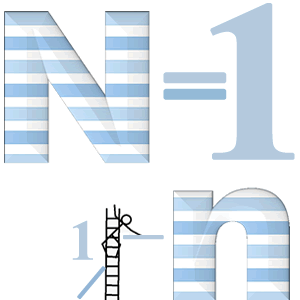 When it comes to positive education, how often do you practice what you learn within your own context to fully feel and understand what you learn before you then teach strategies to your class?
When it comes to positive education, how often do you practice what you learn within your own context to fully feel and understand what you learn before you then teach strategies to your class?
Teachers are terrific consumers of learning. They are often hungry for strategies that will work for their students. I too, am a teacher with considerable experience in the classroom and in school leadership. In my knowledge quest, I notice that sometimes teachers sidestep their own personal learning in order to transfer new knowledge to their classroom because “my students need this.”
When learning, I choose to observe myself using a research concept I affectionately refer to as ‘N = 1’ inspired by idiographic research methods. Whereby ‘N’ is the number of people in the study. In my case it is just me, one person, observing myself! I’d like to suggest this is a useful process for any learner. I ask myself a number of questions: Does this strategy work for me? When is it most useful and how do I need to adapt this for my own person-activity fit? Where in my life can I begin to apply this to see the impact and really test the theory for myself? I know, and the research supports me, that I can only create habits if I consciously practice applying the strategies as soon as possible after I have learned them. ‘N =1’ has become my starting point, my reflective tool, a source of continual application and reapplication for when I lapse.
Personally, I have long felt Positive Psychology (PP) has a foundational role in education. Wellbeing research is burgeoning and debate about wellbeing models for schools continues. When studying the Masters of Applied Positive Psychology (MAPP) I was continually applying N = 1 and credited this technique as a significant partner in my personal makeover. Now, after two years working with the Berry Street Education Model I can feel further transformation. I am acutely aware of the impact that trauma has on my ability to function. I am continually observing my own reactions and interactions. I am still intrigued with the content, the way it fuses trauma research and PP, and am in awe of the noticeable impact it was having on me. In both mind and body I now react differently to stress inducing situations. I also observe that when I am de-escalated and grounded my communication of difficult messages resonates with kindness and grace. (I did mention relapse did I?) It is a work in progress. I am a work in progress.
Have a go at ‘N = 1’ yourself. See how it works for you!
I value using ‘N = 1’ as a way of applying any new learning to myself so that I become my own participant in my own personal study.
In addition to N=1, I have been reminded by teachers in return visits to schools that ‘n’ can also equal ‘family’. It can be helpful to test our new learning in a safe place with participants we know really well.
Here are three stories of strategies in action:
• One teacher, Adam, chose to sit his four-year-old twins down and give them each a chocolate on a plate with the instruction, “You can eat this now if you want, I just have to do some emails though, and when I come back if you haven’t eaten the chocolate I’ll give you another piece.” He was motivated to see how his children would delay gratification and assess whether they had the early skills of good self-regulation! He was replicating that famous Walter Mischel marshmallow test (2015) we’d described in the training that day and was really keen to see early signs from his children.
• Greg then sat at dinner and taught his family how to belly-breath and was amazed that his wife lifted her shoulders and didn’t not take air down to the base of her lungs.
• Christine, another participant, was amazed at the different response her daughter gave when she stopped the task she was doing (preparing dinner), faced her daughter and asked “what went well today?” then listened with interest and eye contact. Christine learned so much more from her daughter and commented how rich their evening conversations have now become because she is applying active constructive responding in a deliberate way.
Embedding new learned principles and testing their effectiveness uses the strengths of curiosity and judgment. It is also a wonderful start to developing habits.
What have you learned recently that you can now resurface in a practical manner?
Ref: Mischel, W. (2015). The marshmallow test: understanding self-control and how to master it. Random House.


